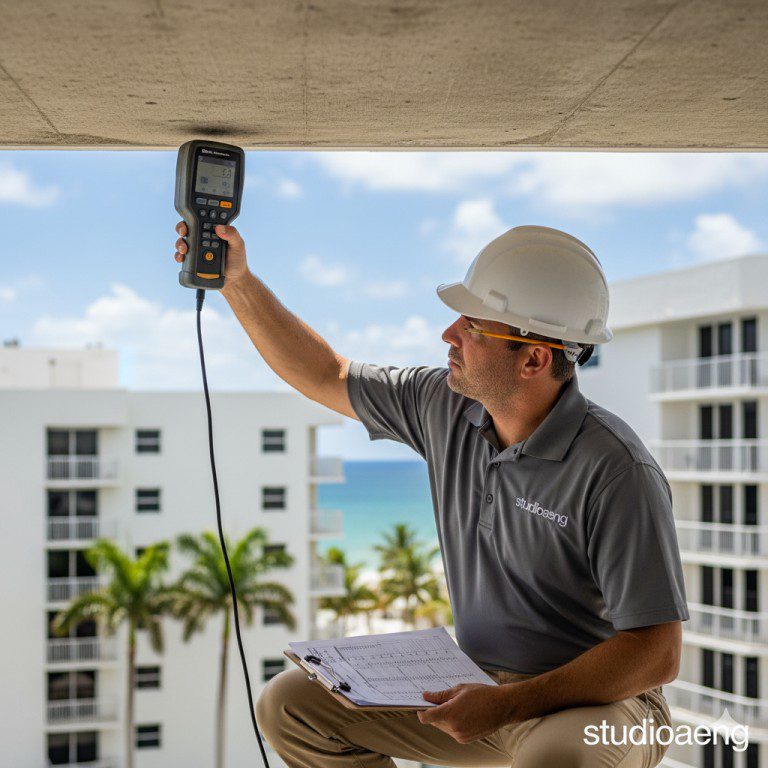The Condo Board's Guide to Your First Structural Integrity Reserve Study (SIRS)
For Florida condominium associations, the Structural Integrity Reserve Study (SIRS) is a new and mandatory legal requirement that is causing a lot of questions. It’s a critical process, but it doesn’t have to be a confusing one. This is not just another inspection; it is a vital financial planning tool that will shape your community’s budget and stability for years to come.
This guide will walk you through the five essential steps of a Structural Integrity Reserve Study, explaining what to expect and how to prepare your association for a successful and compliant outcome.
Table of Contents
Why a SIRS is a Financial Plan, Not Just a Report
The primary goal of a Structural Integrity Reserve Study is to ensure that your association has a clear, data-driven plan to fund future repairs and replacements of the building’s most critical components. A licensed Structural Engineer performs a detailed analysis to answer two key questions: “What will need to be replaced?” and “How much should we be saving for it?” This prevents the need for surprise special assessments and protects the property values of all owners.
The 5 Essential Steps of a Structural Integrity Reserve Study
1. Hiring a Qualified Structural Engineer
The first and most important step is selecting the right professional. Florida law mandates that a SIRS must be performed by a licensed engineer or architect. When choosing a firm, it is crucial to select a qualified Structural Engineer with specific experience in condominium structures and a deep understanding of the new statutes. Their expertise is the foundation of a reliable and accurate study.


2. The On-Site Visual Inspection
Once hired, the engineer will perform a thorough visual inspection of all the common area elements that must be included in the study. This includes, at a minimum: the roof, load-bearing walls, floor systems, foundation, fire protection systems, plumbing, and any other component with a deferred maintenance cost over $10,000.
3. The Component Analysis: Useful Life & Costs
This is the core of the Structural Integrity Reserve Study. For each component, the engineer will use their expertise and industry data to estimate two key figures: its “remaining useful life” (how many years it has left) and its “estimated replacement cost.” This analysis provides the raw data needed to build your financial plan.

4. Developing the Financial Funding Plan
Using the data from the analysis, the engineer will develop a recommended funding schedule. This part of the report will show how much money the association should be setting aside in its reserve fund each year to ensure the necessary capital is available when a major component reaches the end of its life.
5. The Final Sealed SIRS Report
The final deliverable is a comprehensive report, signed and sealed by the licensed engineer. This document meets all requirements of Florida law and becomes a mandatory part of your association’s official records. It is the official roadmap your board will use for future budgeting and financial decisions.
SIRS vs. Milestone Inspection: A Critical Distinction
It is vital to understand that a Structural Integrity Reserve Study is not the same as a Milestone Inspection. The Milestone Inspection is a physical safety check for today, while the SIRS is a financial plan for tomorrow. Florida law requires your association to complete both. For more on the legal specifics, you can review the official text of Florida Senate Bill 4-D.
Your Partner in Compliance and Financial Stability
Completing your first Structural Integrity Reserve Study is a major step toward securing your community’s future. Our team of licensed professional engineers is here to guide you through every step of the process with clarity and expertise.
Contact us today for a no-obligation proposal and ensure your association is compliant, financially prepared, and secure.
